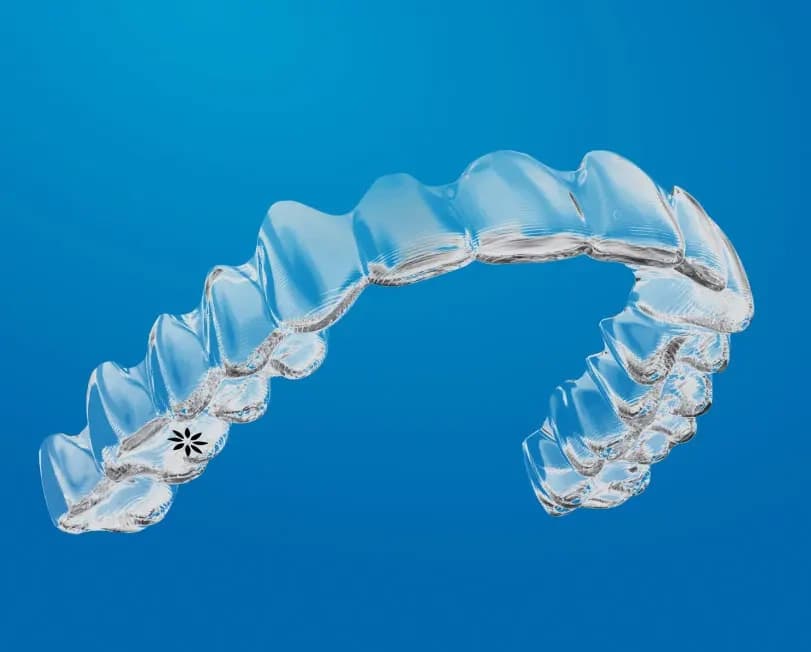Invisalign vs. Typical Braces: Which Choice Is Right for You?
When considering orthodontic therapy, the selection between Invisalign and conventional dental braces presents numerous important elements that warrant cautious analysis. Invisalign uses a discreet alternative with detachable aligners, while typical dental braces supply a more noticeable yet reliable remedy for serious misalignment.
Overview of Therapy Choices

On the other hand, standard dental braces consist of steel braces and cables that are bonded to the teeth. This technique uses continuous pressure with time to attain positioning. While effective for complicated orthodontic problems, typical braces need normal check outs for changes and can present difficulties in preserving dental health as a result of the problem of cleaning up around cords and braces.
Both options have their advantages, and the selection often rests on certain oral problems, way of living choices, and patient compliance. Ultimately, getting in touch with an orthodontic professional is essential for establishing one of the most suitable therapy strategy customized to specific needs. Understanding the nuances of each option can substantially affect the general success of orthodontic treatment.
Aesthetic Considerations
A considerable aspect influencing the choice between Invisalign and conventional dental braces is the aesthetic appeal each treatment offers. Invisalign aligners are crafted from clear plastic, making them practically undetectable when put on.
In comparison, standard dental braces contain steel braces and cords, which can be extra noticeable. While developments in orthodontic innovation have resulted in the development of smaller sized braces and tinted elastics, traditional dental braces still preserve a more noticeable profile. For some individuals, the visibility of dental braces might deter them from looking for essential therapy.
Eventually, the selection between Invisalign and conventional braces may rest on individual choices pertaining to looks. Individuals that prioritize discretion usually lean toward Invisalign, while those who are less concerned regarding exposure might choose traditional dental braces. Understanding the visual ramifications of each choice is important for making an informed choice that straightens with one's lifestyle and choices.
Comfort and Convenience
In regards to benefit, Invisalign aligners are removable, enabling people to enjoy their preferred foods without constraint and maintain optimal dental health. Brushing and flossing are simplified, as the aligners can be gotten during these routines, whereas standard braces require careful maneuvering around wires and braces.
In comparison, typical braces require routine modifications, making them much less practical for those with active schedules. In general, the convenience and ease of Invisalign make it an appealing option for several individuals looking for orthodontic treatment.
Therapy Duration and Performance
While both Invisalign and conventional dental braces work in fixing oral misalignments, the duration of treatment can differ considerably in between both options. Normally, Invisalign treatment can take anywhere from 12 to 18 months, depending upon the complexity of the case. The clear aligners function by slowly moving teeth right into their desired placements, and routine follow-ups with an orthodontist assistance guarantee progression stays on course.
In comparison, typical braces commonly call for a longer commitment, generally varying from 18 months to 3 years. This is because of their fixed nature and making use of wires and braces, which can be much more efficient for complex situations and serious misalignments (Invisalign). The therapy efficiency of traditional dental braces is well-documented, as they allow for specific adjustments and higher control over tooth movement
Eventually, the option in between Invisalign and conventional braces might rest on both the anticipated therapy period and the particular dental problems handy. Consulting with an orthodontist is crucial, as they can give tailored suggestions based upon individual demands, guaranteeing the selected technique lines up with preferred durations and results.
Cost Comparison and Insurance Policy Options
Expense plays a substantial duty in the decision-making procedure for individuals considering orthodontic treatment, whether choosing for Invisalign or conventional braces. Typically, the price of Invisalign arrays from $3,000 to $8,000, while conventional braces generally cost in between $2,000 and $6,000. Factors read what he said affecting these costs consist of the complexity of the instance, the period of therapy, and geographical location.
Insurance coverage can significantly influence out-of-pocket costs. Lots of oral insurance policy strategies provide partial insurance coverage for orthodontic therapies, however the specifics can vary commonly. It is important for people to assess their insurance plan to identify the extent of coverage for either alternative. Normally, traditional dental braces might be extra frequently covered by insurance strategies compared to Invisalign, which some insurance firms categorize as a pop over here cosmetic treatment.
Furthermore, several orthodontic practices supply flexible layaway plan, making both treatment alternatives much more accessible. Individuals need to inquire about prospective financing options and discounts for upfront payments. Reviewing the total cost, consisting of insurance coverage advantages and layaway plan, is crucial for making an informed choice that aligns with both aesthetic preferences and spending plan considerations.

Verdict
In summary, the choice between Invisalign and traditional braces rests on numerous elements, consisting of visual preferences, comfort, treatment duration, and expense. Invisalign uses a discreet, detachable option that facilitates dental health and dietary adaptability, while traditional dental braces may be better for complicated oral issues and frequently come at a reduced rate point. Ultimately, assessment with an orthodontist is necessary to evaluate individual situations and establish one of click to find out more the most suitable therapy alternative for accomplishing ideal oral placement.
When considering orthodontic therapy, the option between Invisalign and traditional braces presents a number of essential elements that merit cautious analysis.Comparing Invisalign and typical dental braces exposes unique treatment options for orthodontic improvement.While both Invisalign and standard dental braces are efficient in remedying oral imbalances, the duration of treatment can differ considerably in between the 2 options.Price plays a considerable duty in the decision-making process for people thinking about orthodontic treatment, whether choosing for Invisalign or traditional dental braces.In recap, the choice in between Invisalign and traditional braces pivots on multiple factors, including aesthetic choices, comfort, treatment period, and price.